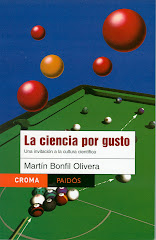 by Martín Bonfil Olivera
by Martín Bonfil OliveraPublished on Milenio Diario, October 15, 2008
In the beginning it was curiosity, useless curiosity. In 1955, the Japanese scientist Osamu Shimomura was commissioned by his boss in Nagoya University to study why the mollusk Cypridina glowed in the dark.
Shimomura managed to isolate the bioluminescent protein that, through a chemical reaction, produced the glow. He was hired by Princeton University, where he started studying why the jellyfish Aequorea victoria glowed with green light. What he discovered in 1962 was another bioluminescent protein that he called aequorin. But aequorin glows in a blue color; the living jellyfish glowed in green. Why?
Answer: there was a second protein, but this one was fluorescent (meaning that it glowed when it received blue or ultraviolet light, without chemical reactions) and showed green light. The green protein absorbed the blue light from the aequorin to give the jellyfish their ghostly green glow. For lack of imagination, this second protein was named "green fluorescent protein" (GPF).
In 1998, Martin Chalfie, at Columbia University, heard about GPF and realized its enormous potential as a molecular marker. He came out with the idea of splicing it, through genetic engineering, to other proteins. This way, the glow of GPF would reveal where these proteins are inside and outside of the cell.
Finally, Roger Tsien, from California University, managed to modify GPF with protein engineering. He produced variants that glowed in cyan, blue and yellow. He also identified similar proteins in other organisms, including one from a coral that glowed red . This way, a full color palette was completed that today helps to study the location and movements of proteins in living cells with a level of detail that was unimaginable until now.
You know the rest: this story end up with a Chemistry Nobel price. But what is the moral ? That science is not a directed system that can be forced to yield predetermined results. Its more like a bet system, where only buying a lot of tickets giving support to a big amount of "basic" science can, from time to time, win a mayor prize. Like the one earned from the "useless" curiosity of Shimomura, that wanted to know why the jellyfish glow.
(translated by Adrían Robles Benavides)
To receive Science for pleasure weekly
by email, subscribe here!





No comments:
Post a Comment